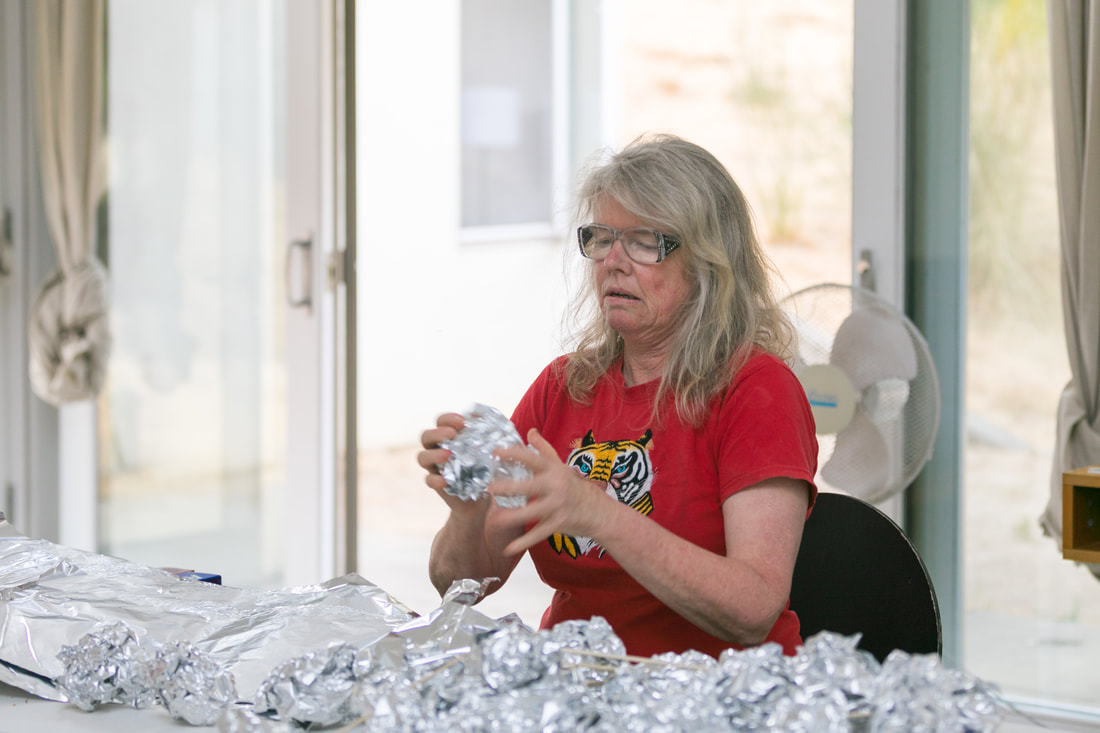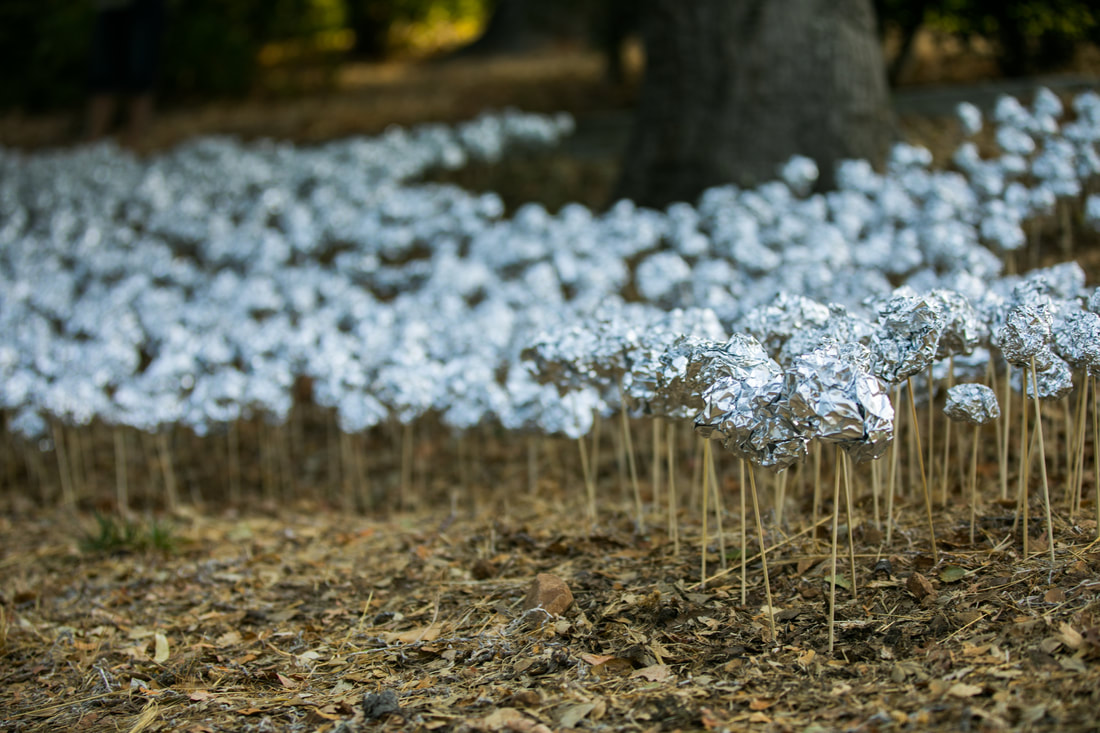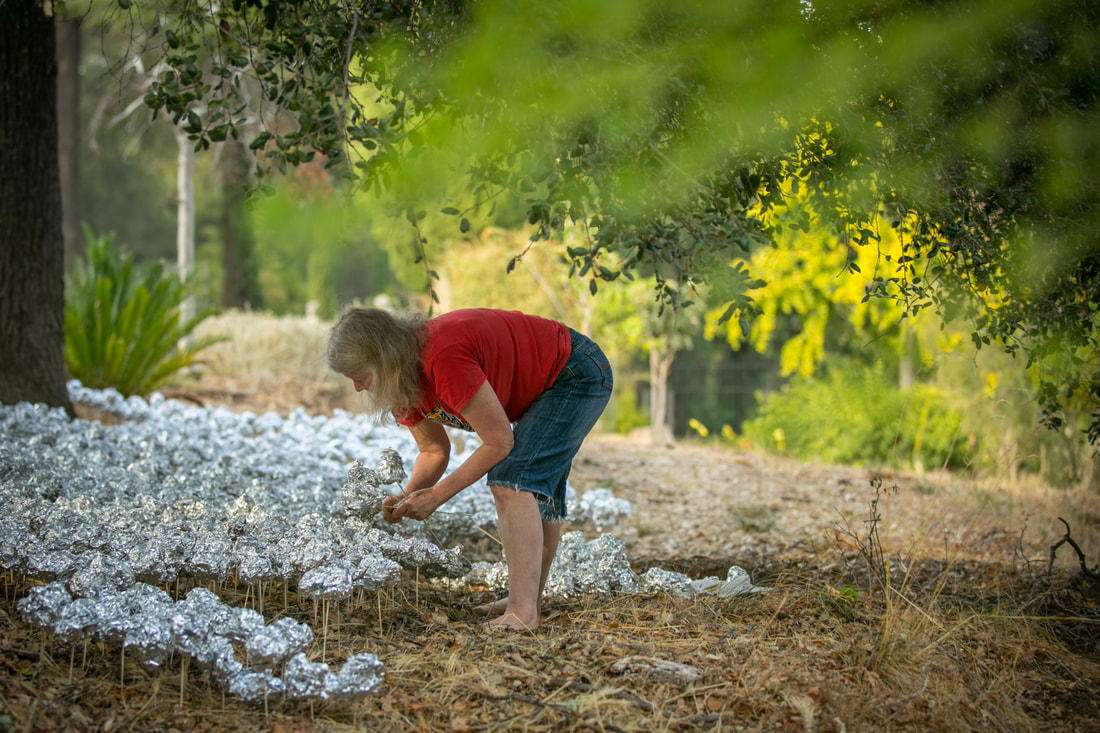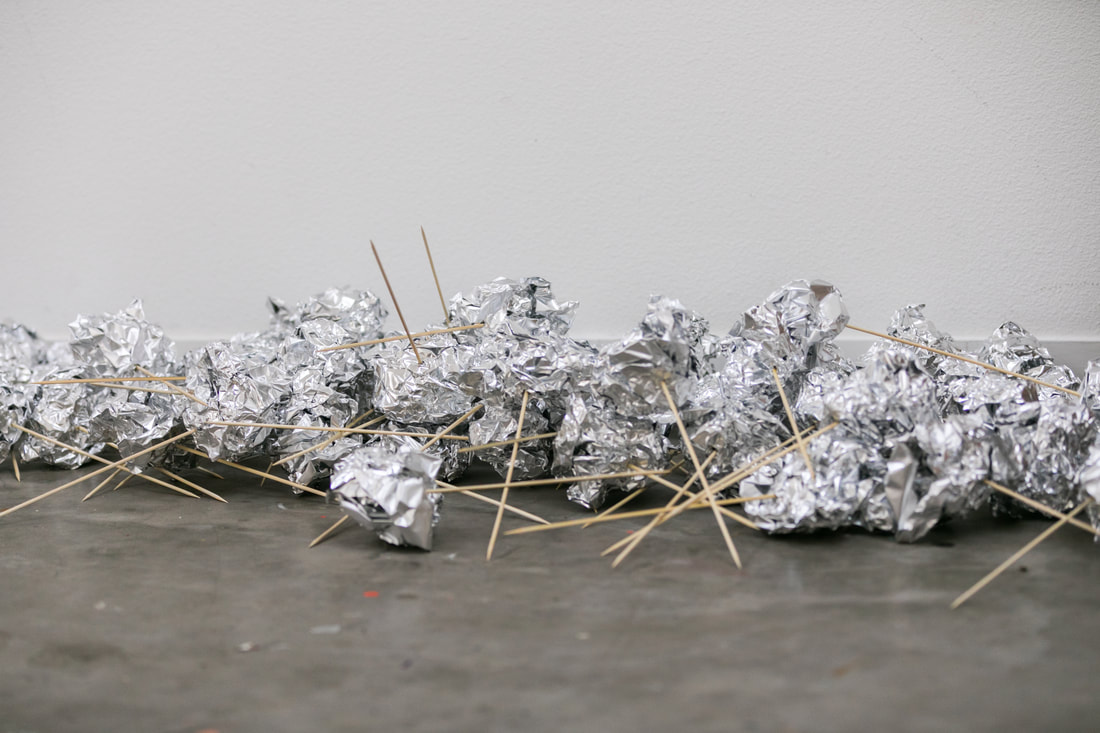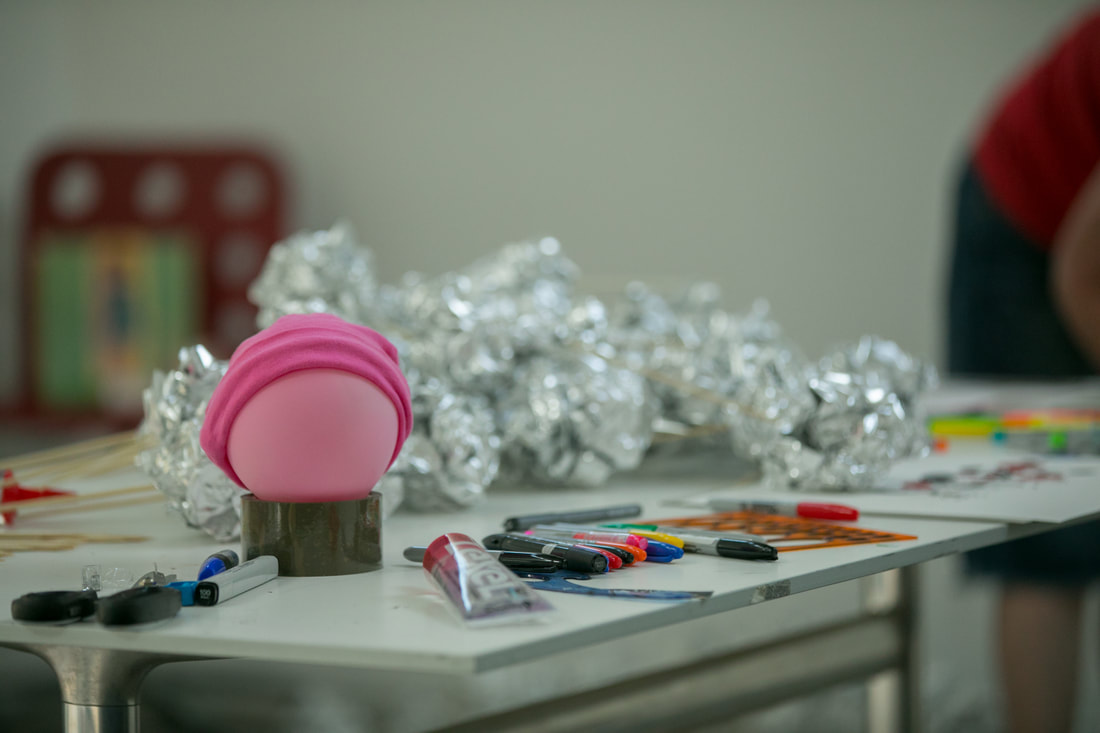By Ashley Voss for Art Practical
Originally published: October 31, 2017
In 2015, after being nominated by fellow New Zealand artist Lisa Reihana, Darragh was awarded a three-month fellowship at The Sally and Don Lucas Artist Residency Program at Montalvo Arts Center in Saratoga, California, to be used within three years. The following fall, Darragh spent a month at Montalvo in order to observe how the residency operates, understand more about the fellowship expectations, and see what previous artists created during their stay. Now in her third stay at Montalvo, where I had the opportunity to meet with her in her studio, Darragh is working on FOIL , a temporary installation situated within a garden on the residency’s grounds.
Judy Darragh in the studio at Montalvo Arts Center. Courtesy of Montalvo Arts Center. Photo: Tina Case.
Although the installation highlights the harmful effects caused by the materials involved with the consumer convenience industry, it likewise contributes to the issue. Aluminum foil’s unnatural existence in the environment can leave a negative impact on its immediate surroundings and wildlife. Left to naturally decompose, the recyclable material can take between 200-500 years to breakdown depending on environmental conditions like sunlight, moisture, and oxygen. 2 Perhaps Darragh has not completely left kitsch behind, as this can be considered questionable in taste to any environmentalist.
Judy Darragh. FOIL , 2017; installation of aluminum foil and wooden kabob skewers. Courtesy of Montalvo Arts Center. Photo: Tina Case.
FOIL continues in the artistic direction of Limbo (2015) , a piece composed of seven large, metallic shapes accented with fluorescent paint and acrylic rhinestones. This installation, commissioned by Auckland Art Gallery Toi o Tāmaki, hangs from the kauri tree canopy in the gallery’s North Atrium. The metallic forms make light dance around the space, similar to a disco ball, while the colorful forms themselves look like hallucinatory meteors.
Judy Darragh. FOIL , 2017; installation of aluminum foil and wooden kabob skewers. Courtesy of Montalvo Arts Center. Photo: Tina Case.
Darragh was especially curious to participate in the residency at Montalvo to experience how the “traditional male artist” has been societally allowed to work in a studio separate from the home. As both an artist and a mother, Darragh had to become more efficient with the limited time she could dedicate to art-making. “As a female artist, there often have to be different ways of working,” said Darragh. “We traditionally do a lot of caring—I’ve been caring for my son, and now I’m caring for my mother.” Previously, Darragh was involved with the artist initiatives Teststrip and Cuckoo, and most recently COOKs, where artists who are also mothers gather for a catered meal once a year for networking and discussion.
Judy Darragh. FOIL , 2017; installation of aluminum foil and wooden kabob skewers. Courtesy of Montalvo Arts Center. Photo: Tina Case.
The idea for FOIL stems from the Gaia hypothesis formulated by chemist James Lovelock in the 1970s. While viewing satellite images of the earth, Lovelock observed a layer of ozone moving around the planet and proposed the idea of Earth as a superorganism. 4 Scientists were slow to accept his theory, however acceptance about the Earth as a self-organizing system has grown since the early 1990s. 5 “Lovelock was ahead of his time,” said Darragh. “I think the idea of the earth being alive is a really important one, and one that prompts action—specifically thinking about the earth as an overheated planet, and how we need to cool it down.”
Judy Darragh in the studio at Montalvo Arts Center. Courtesy of Montalvo Arts Center. Photo: Tina Case.
A strong parallel between science and fiction in relation to art is ever-present in Darragh’s work. Science is subject to discovery, and is about believing in things that are not visible to the human eye. Art operates similarly because viewers need to believe in the concept of an artwork in order for the work to affect them. Throughout her career, Darragh has increased her utilization of this parallel, and puts it to use in space by producing large-scale installations that explore her interest in what lies between fact and fiction, and high- and low- culture—with an element of humor. FOIL is a reminder of humans’ inherent interest in understanding the inner workings of the world, and our relationship within a larger ecosystem. Regardless of if we know the “right” answer or not, Darragh presents us with the opportunity to try and—purposely or not—possibly fail.
Notes:
- Smith, Juliet. “Darragh Sticking with Her Art.” Daily News (February 28, 2002). http://www.sfpl.org (accessed October 21, 2017).
- Gitlitz, Jenny. “Americans Trashed 50 Billion Aluminum Beverage Cans in 2001.” Container Recycling Institute (July 9, 2012). http://www.container-recycling.org (accessed October 22, 2017).
- This, and all subsequent quotations by Darragh, are from a conversation between the author and artist on October 2, 2017.
- Rafferty, John P. “James Lovelock.” Encyclopedia Britannica (February 6, 2015). http://www.britannica.com (accessed October 21, 2017).
- Ibid.



